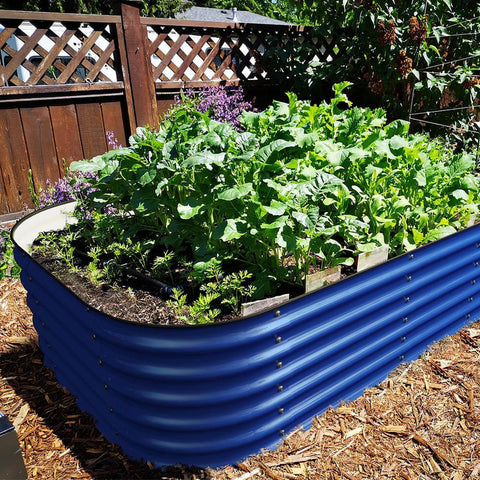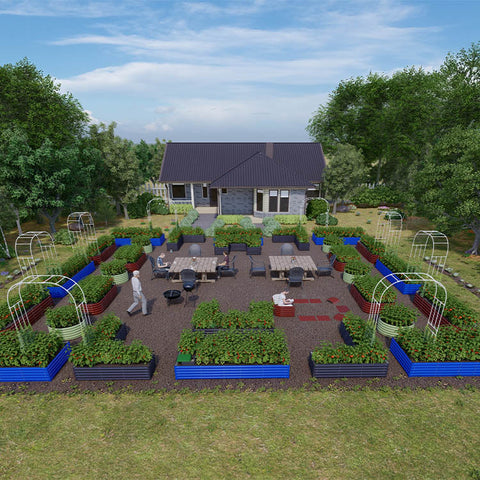Small Vegetable Garden Design: Maximizing Space with Raised Garden Beds for Abundant Harvestt
Creating a bountiful vegetable garden in a limited space might seem challenging, but with the following small vegetable garden design ideas that incorporate raised garden beds, you can efficiently grow more vegetables in a confined area and relish the rewards of a fruitful harvest.
- Raised Bed Design: Raised beds are an excellent choice for small vegetable gardens. They allow you to have full control over the soil mixture and enable intensive planting, maximizing the use of limited space. Opt for corrosion-resistant materials like cedar, spruce, or rusted steel, and fill them with a balanced blend of high-quality garden soil and compost to provide an optimal growing environment.

- Creative Container Planting: Even in a small space, you can still cultivate food by utilizing containers, window boxes, hanging baskets, or buckets. These options are perfect for urban gardeners seeking to make the most of their limited space. Remember to choose containers with drainage holes, opt for larger containers to retain moisture, and use specialized potting soil for healthy plant growth.
- Vertical Planting Solutions: Vertical gardening is a great solution for compact spaces. Vining vegetables such as cucumbers, squash, and indeterminate tomatoes can be grown vertically using fences, trellises, stakes, and other structures. This approach saves ground space and reduces susceptibility to pests and diseases. Ensure that the chosen structures are easily accessible for maintenance and harvesting, especially as the plants grow.
- Edible Landscape Design: Integrating vegetables and ornamental plants creatively can result in both beauty and practicality. You can plant leafy greens like lettuce and cabbage along the borders or tuck pepper and tomato seedlings among perennial plants for a harmonious blend of aesthetics and functionality. Consider growing pole beans and cucumbers on trellises or arbors, or combining edible plants with flowers in summer containers. You can even pair ultra-dwarf tomatoes and peppers with ornamental plants like salvia or marigolds.
- Smart Vegetable Selection: In small garden spaces, it's wise to avoid planting vegetables that require a lot of room and have long growing periods, such as pumpkins, melons, and corn. Instead, opt for compact and bushy varieties like the 'Butterbaby' butternut squash that offer a substantial yield without taking up excessive space.

- Intensive Planting Strategies: One of the simplest ways to boost productivity is through interplanting and succession planting. Pairing crops with different growth rates, such as fast-growing leafy greens and slower-growing tomatoes, optimizes space usage. As spring crops are harvested, enrich the soil with compost and plant summer crops like bush beans, zucchini, or cucumbers to ensure continuous yields throughout the growing season.
By implementing these small vegetable garden design ideas, you can transform even the tiniest space into a diverse and productive vegetable garden, providing your family with fresh and nutritious produce. Whether it's raised beds, container gardening, or vertical solutions, these strategies help unlock the full potential of your gardening space, turning your green dreams into reality.
